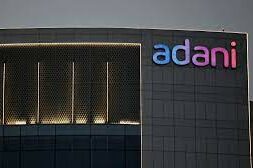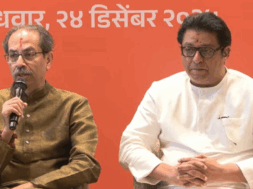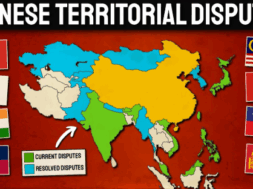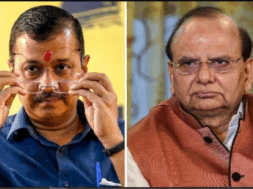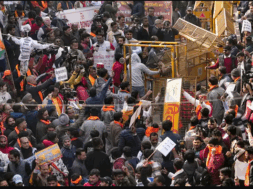
Exactly a week after the Supreme Court said reports by Hindenburg Research and the Organised Crime and Corruption Reporting Project (OCCRP) cannot be considered as the gospel truth, Indian Twitter woke up to a fresh set of allegations against the Adani Group. This time, the exclusive article was by ‘Adani Watch’, a non-profit project established by the Bob Brown Foundation “to shine a light on the Adani Group’s misdeeds across the planet”.
The article purported to show how associates of the Adani Group established an intermediary company to overcharge Adani companies in India for machinery required for large power generating plants. Funds were then allegedly siphoned off to tax-haven companies controlled by Gautam Adani’s brother Vinod Adani. The article was “written by a journalist based in India who chooses to be anonymous” and relies on documents that “show how funds from the alleged over-invoicing were sent to entities in the United Arab Emirates and the tax haven of Mauritius”.
As expected and on cue, detractors of the Adani Group started retweeting the report and resumed demands for the Securities and Exchange Board of India and the Supreme Court to take note of these documents. Paranjoy Guha Thakurta, who was recently questioned by the Delhi Police in the NewsClick case, was among the first; he tweeted, “…these [the documents] are not fake and are entering the public domain for the first time. The docs suggest that Adani Group cos over-invoiced imports of power equipment, siphoned funds – Part 2 awaited.” Others like journalist Ravi Nair and advocate Prashant Bhushan also joined in.
All this betrays an astonishing disregard for the highest court of the land, which just last week said the Securities and Exchange Board of India (SEBI) cannot be expected to accept as “gospel truth” foreign media reports about Organised Crime and Corruption Reporting Project (OCCRP)’s findings of alleged stock manipulation and accounting fraud against the Adani Group. “You cannot expect a statutory regulator to take as gospel truth something that has been reported in a financial newspaper. We are not discrediting the reports, but we cannot certainly say that they are evidence for the SEBI,” Chief Justice of India D.Y. Chandrachud had said addressing advocate Bhushan, who was appearing for petitioner and third-year law student Anamika Jaiswal. Mr Bhushan had attempted to find fault with SEBI’s probe into 24 cases of irregularities relating to alleged stock manipulation by the Adani Group and argued that it had failed to take note of “credible information” that was published by Hindenburg Research.
To Mr Bhushan’s question that if journalists could get hold of all these details, why was SEBI, with its vast powers of investigation, not able to do the same, Chief Justice Chandrachud, heading a three-judge Bench, said, “A statutory body like SEBI is bound by evidentiary requirements… Somebody who publishes is not bound by the evidentiary standards of statutory bodies. They [SEBI] are amenable to the jurisdiction of the Securities and Appellate Tribunal. They can’t just pick up a newspaper report and issue show cause notices to others. That notice to show cause would be quashed by judicial bodies.”
When Mr Bhushan said if the SIT could get reports from journalists for its investigation, SEBI could do the same, the Bench said, ”Should SEBI be following up journalists and asking a journalist, who is not subject to their jurisdiction, for material relating to the case?”
In the present case relating to the “exclusive article” published by the anti-Adani non-profit Adani Watch, the process of collecting information could prove to be much tougher as it was written by a journalist “who chooses to remain anonymous”. So what these people expect SEBI and the Supreme Court to do is to take action based on allegations by an unnamed journalist who has relied on documents of unproven integrity. Is this how our judicial bodies and system must function? Should the courts pass judgment and hold a person or an organization guilty on the basis of purported documents published anonymously by a person or an NGO? Why would we then need investigating agencies like SEBI or the Central Bureau of Investigation? One can well imagine what would happen to the justice system and stock markets in the country if one were to go by the demands made by such people and entities.
The real victims in this whole episode are the retail shareholders and investors in the Adani Group of companies, who lost over Rs 12,500 crore after the value of shares took a deep dive following the release of the report by Hindenburg research in January. The total investment value of individual investors in the 10-listed Adani companies went down to Rs 41,499 crore on January 30 from Rs 54,066 crore on January 24. Shares of the Adani Group companies had witnessed heavy selloff after Hindenburg claimed that the conglomerate had indulged in stock manipulation and accounting fraud.
During the hearing last week, CJI Chandrachud rightly expressed concern by asking what SEBI intended to do to protect investors from the kind of volatility seen in the stock market. He had said, “One of the principal reasons for our intervention was the extreme volatility of the stock market which caused loss to investors’ wealth. What is SEBI intending to do to protect investors against such volatility caused by short selling? Has SEBI examined whether there is a need for tightening regulations? What is SEBI intending to do in terms of protecting investors?”
Though SEBI is working towards safeguarding the interests of retail investors and shareholders, the market seems to have taken a cue from the Supreme Court’s comments on the reports by Hindenburg Research and OCCRP, reposing its faith in the corporate governance of the Adani Group. The conglomerate’s market capitalisation surged by over Rs 1 lakh crore earlier this week, marking the biggest one-day gain since the release of the Hindenburg report on January 25. Adani Total Gas soared 20%, the highest tradeable limit on Tuesday. Adani Energy Solutions surged nearly 19%. Adani Power, Adani Green Energy and NDTV jumped over 12% each. The total market capitalisation of all 10 Adani Group stocks increased to Rs 11.3 lakh crore on Tuesday.
This is a ringing endorsement of the Group’s robust capex plans, governance and transparency and offers substantial returns to its stakeholders. With this, the Adani Group looks to be on track to reclaim and even outgrow the market cap it enjoyed prior to January’s fall and finally put the ghost of Hindenburg Research to rest.
